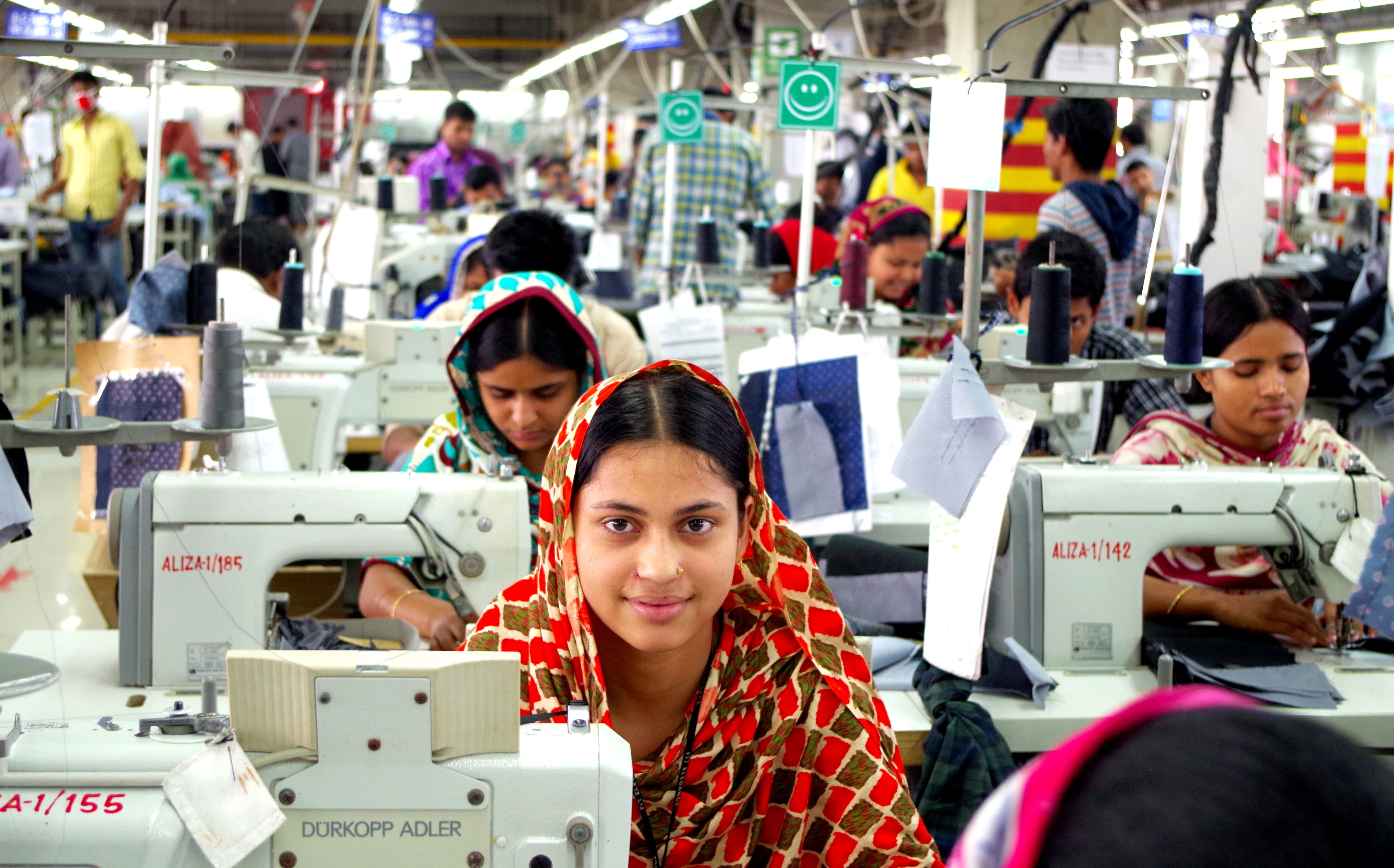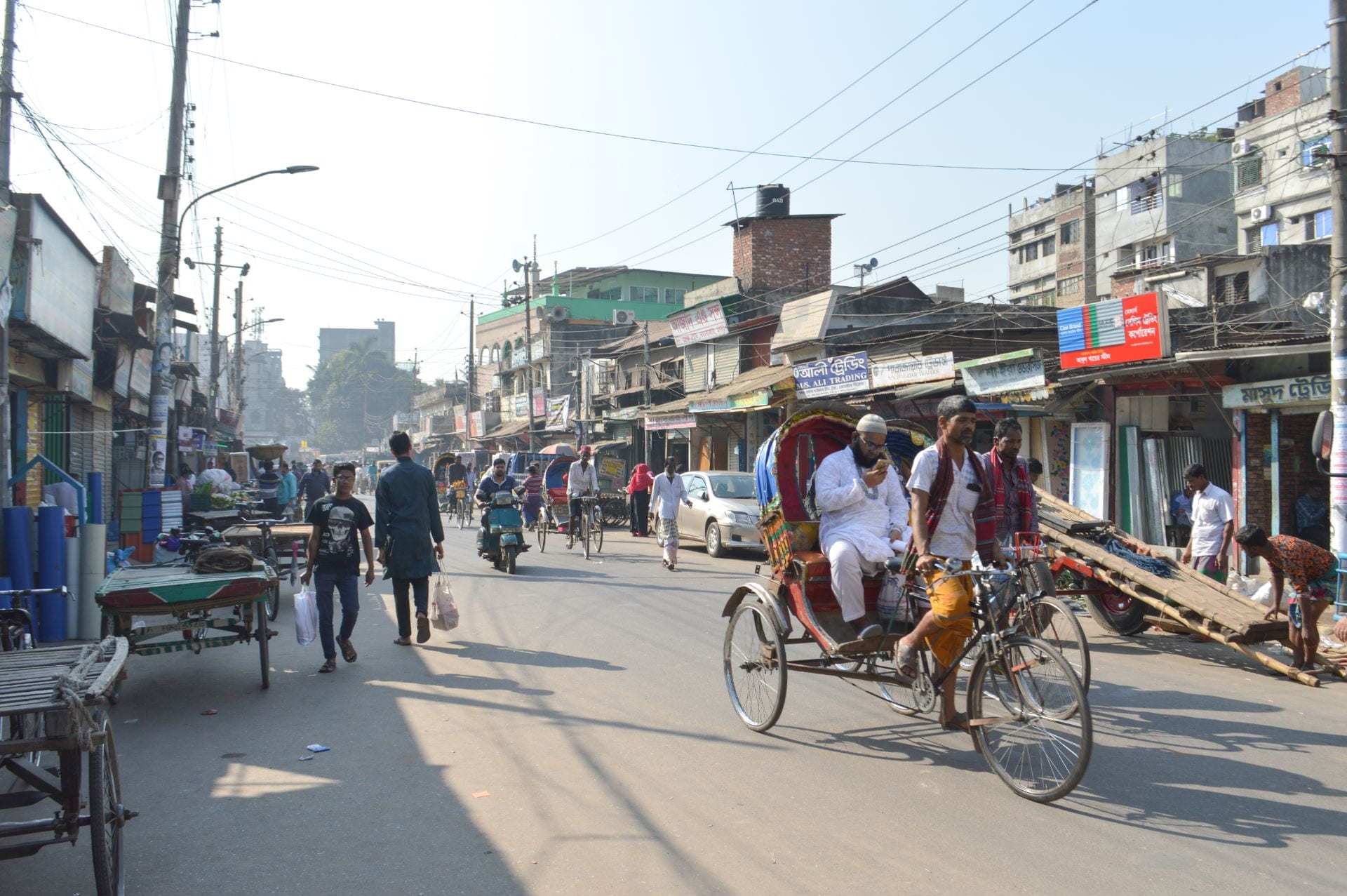
Prior to the 1960s, about 90% of the clothes purchased in the United States were also made here. Since then, it has been reduced to only about 3%. Over the years, companies have increasingly chosen to outsource their labor to countries with lax labor laws (or a willingness to overlook them) to pay less for the work that is necessary for clothing production. The purpose of this blog is to highlight the negative impacts of these choices based on the information given in the documentary True Cost.
The term “fast-fashion” refers to the shift in the fashion industry that has resulted in faster production with lower costs. At first glance, this appears to be an extremely beneficial change, especially for the general United States consumer. We can buy more clothes and spend less money in the process. However, it is important that we take time to ask how it is possible to the industry to have changed the way that it did. What does it really cost?
Garment Workers
When discussing the costs of the fast-fashion industry, one of the most well-known examples is the Rana Plaza building collapse of 2013 that occurred in Dhaka, Bangladesh. At the time, the building was being occupied by garment factories for western companies such as Children’s Place, Joe Fresh, and Walmart. Workers in the factories told their managers that they had noticed cracks in the building but were told to go back to work. At one point, the managers were even given an evacuation order (which they ignored). Nothing was done. As a result, 1,129 workers died, and even more were injured.
Outside of the tragedies that have occurred in the industry’s factories, many of the factories cut corners on a regular basis to reduce production costs. Work areas are frequently found to have poor lighting, which can be damaging to the workers’ sight, and toxic chemicals, which can be harmful to their respiratory systems. As of 2016, the minimum wage in $67 dollars each month, which is far less than fair compensation for the labor of these workers, especially in such poor conditions. More often than not, these workers cannot simply quit and find work with better circumstances. They must be able to provide for themselves and their families and lack the education and qualifications for more favorable employment.
Environment
Fast-fashion is also an incredibly unsustainable industry. Eileen Fisher, a high-end fashion retailer who aims to use sustainable and ethical production methods, has called the clothing industry “the second-largest polluter in the world.” It’s easy to see why. In 2013 alone, 15.1 million tons of textile waste were created. The majority of this waste ends up piled up in landfills. These piles release methane as they decompose and are a noteworthy factor in global warming. Even if their relationship with global warming were not an issue, the amount of land required to store of all this waste is simply unacceptable.
Leather tanneries are also a significantly harmful part of the clothing industry. The chemicals used in the tanning process are extremely toxic and are often disposed incorrectly. This leads to the pollution of the drinking water, soil, and produce of the communities surrounding the tanneries. These chemicals lead to serious illness and diseases. People living in these areas are facing skin problems, numbness of limbs, and stomach problems. The chemicals are poisonous to both the environment and the health of human beings. Not only do climate change and pollution have harmful effects that we can see today, but they are also severely damaging to the world and resources that future generations will have access to.

Human Rights
The issue of fast-fashion is one that impacts many different areas in human rights. Regarding employment, Article 23 of the United Nation’s Universal Declaration of Human Rights (UDHR) states that every person has the right to “just and favourable conditions of work,” as well as the right to “just and favourable remuneration ensuring for himself and his family an existence worthy of human dignity.” The harmful work environments and low-wages involved in the clothing industry prevent workers from accessing these rights. Additionally, Article 25, the UDHR depicts the right to a standard of living that is sufficient to maintain an individual’s health and well-being, which requires an adequate income.
Fast-fashion also has a connection to gender equality. In the garment industry, 85% of the workers are women. Often, these women are single mothers without any other real employment options, due to a lack in access to education and other similar resources. They continue to work in poor working conditions because they want their children to be able to go to school and have better job opportunities in the future.
What You Can Do
It is easy to fall into feeling like there is nothing you can do on this side of the counter and ocean. Fast-fashion seems to be a very distant issue. However, there are changes you can make in your own life to be a part of the transformation of the fashion industry. First and foremost, it is important that you make an effort to stay informed on the issue and inform others as well. A problem cannot be solved if no one acknowledges that it exists. Second, if you can afford it, buy from brands such as Eileen Fisher and People Tree who work to produce clothing through sustainable and ethical methods. Such companies are generally more expensive than what we have become accustomed to because of the fast-fashion industry, but the products are typically of a higher quality. If you need more affordable options, try to get clothes second-hand, whether that be through clothing swaps or going to thrift shops. Apps like Depop and Poshmark, make it possible to buy clothes directly from other individuals, or sell your old clothes directly to other people. Selling your unwanted clothes through apps like these, you can help keep clothing out of landfills. Donating clothes can be a great option when you want to clean out your closet, but it is best when you can come relatively close to directly giving clothes to the people who will receive them. Of the clothes that are donated to “mission stores” like Goodwill, only about 10% are purchased in those stores, and the rest have the potential to end up in landfills.
Finally, though the aforementioned options are wonderful and should warrant consideration and use, it is imperative to recognize that we do not need to purchase clothing nearly as often as we do. Advertising glamorizes things that we do not really need so that we will spend more money. New trends come out nearly every week, so we feel the need to buy more stuff just to keep up. Society has become very consumeristic, and this contributes to industries, such as fast-fashion, that disregard the health and safety of their workers to allow people in countries like the United States spend as much money as possible. By purchasing less of what we do not need, we can avoid supporting these harmful practices while also saving money ourselves.
You may not always be a part of large-scale change, but you can make small, daily changes that, when combined with the efforts of others, can truly make a difference.
